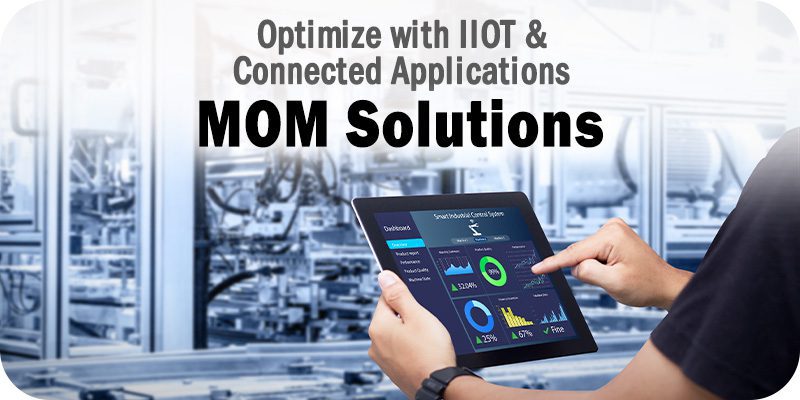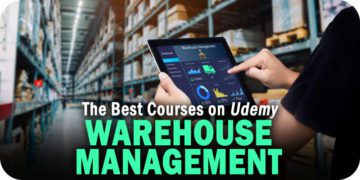As part of Solutions Review’s Premium Content Series—a collection of contributed articles written by industry experts in enterprise software categories—Mike Bradford, the Strategic Business Development Director at DELMIA, outlines how connected applications and the Industrial Internet of Things (IIOT) can help companies get more value from their Manufacturing Operations Management (MOM) solutions.

To find out how businesses can make the most of IIOT and connected applications in MOM, let’s look into the impact of IIOT on a manufacturing firm when used effectively and how it can provide a real return on investment (ROI) for business owners.
Getting the Most Out of IIOT & Connected Applications in MOM
Manufacturing bosses are tasked with squeezing every ounce of performance out of their overall operation yearly. With outside factors such as supply chain issues and the recovery from COVID playing a pivotal role in the performance of manufacturers around the globe, connected applications, and IIOT must be maximized to mitigate external issues.
The key to maximizing your business’s value from connected technology is contextualizing the information you have gathered. In other words, just collecting and seeing the data isn’t enough—it has to be contextualized and then formed into an actionable plan. From a business perspective, you have to be able to take action on the information you have gathered, and that’s where the MOM side of the equation becomes powerful.
For example, consider a MOM solution capable of communicating with various devices using different communication protocols. Ideally, it will also contain the logic to say when “x” happens, you want to take “y” action—a “What-if” scenario. This type of solution gives business owners actionable advice they can act upon to improve their entire operation and overall efficiency.
Let’s say something as simple as SPC (Statistical Process Control). One of the rules of SPC is if you see a result trending in the same direction for four different measures in a row, it indicates a problem will occur. Even if it’s still within acceptable limits, the fact that it’s going in the same direction four times in a row indicates there will be an issue.
At that point, it’s crucial to monitor the SPC information and alert your team to potentially stop whatever process it collects, as changes will be required. With any IIOT information, whether it’s the temperature on a furnace or the number of cycles on a machine, it is essential to identify any issues and be able to take action and automate solutions where possible. Anytime human intervention is required, you’ll slow down the automation process. While there will invariably be a point where a human will need to intervene, you want to do as much automatically as possible, as this enables your business to work in the leanest way possible.
Can IIOT & Connected Technology Be Used Across Various Industries?
IIOT and connected technology are not limited to the manufacturing industry, as they can generally be used in any industry that utilizes machines on a larger scale. Suppose you’re talking about a highly automated industry that uses machines, equipment, and robotics devices. In that case, IIOT and connected technology will be more valuable there than in a manual assembly line.
There aren’t many fully manual applications anymore, as almost every type of manufacturing has some level of automation. Moreover, any level of automation can become valuable when connected to the technology that can help to inform your business decisions moving forward.
What About Return on Investment for IIOT & Connected Technology?
It’s no secret that business owners are always keen on ensuring they can attribute an ROI to anything they invest in, and that’s no different with IIOT & connected technology in MOM. For example, everybody used to talk about predictive maintenance using IIOT to collect data about equipment and use it to predict when there would be a failure before it happened and, if so, how to avoid it. You would increase critical activity and efficiency measures and decrease downtime. Those have value, but that’s not the only applicable area anymore.
Back to our SPC example: you can significantly improve your quality statistics. Using IIOT devices to automatically measure, alongside a solution to evaluate and react when things appear to be going out of control or into the quality specification, is a great way to ensure you’re reducing your total cost of production downtime. Regarding quality, you’re improving your quality measures, such as Right First Time, so there’s significant value to this depending on the application where you use it.
The key to IIOT is that a lot of the processing can occur at or near the device. People talk about cloud applications—such as MOM and MES—but the issue with cloud applications is the latency between the actual application and the devices because anytime you go over the Internet, there’s a certain amount of latency.
A couple of years ago, many within the industry discussed what they call a “fog layer.” A fog layer is a layer of intelligence and architecture at the plant. It eliminates the latency issue between IIOT devices and cloud applications. For example, you can have a fog layer that takes care of the near term, which means it’s more urgent. You need quick response calculations, playing out the calculation’s execution, and then you can pass pertinent data up to the cloud for processing or to a data lake for analytics.
This is another place where a MOM solution can be valuable. Instead of having the entire MOM solution suite on-premise, you can have the fog layer as a component of the MOM application, while the primary server can be on the Cloud or at a Data Center. By doing this, your company can simultaneously take advantage of IIOT, fog, and Cloud.
- What Is MES & Why Should Manufacturers Invest in It? - June 28, 2023
- Get More Out of MOM Solutions with IIOT & Connected Applications - June 15, 2023





